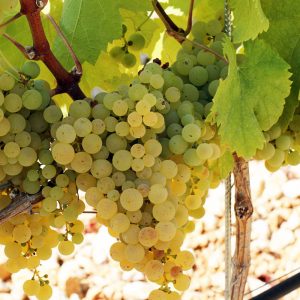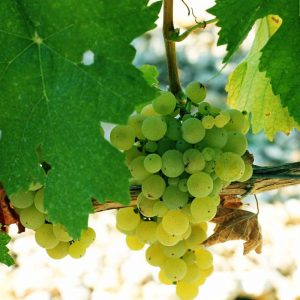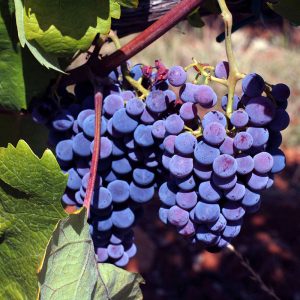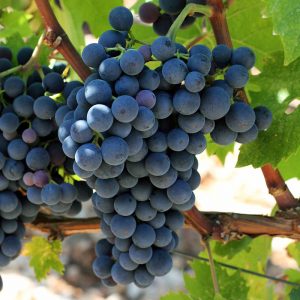 Blatina
Blatina
Blatina is an autochthonous variety of Herzegovina. It has a functionally female flower, which is why it is always grown in plantations with accompanying varieties such as Alicante Bouschet, Gamay, Merlot, Vranac and Trnjak, which are also pollinators of Blatina. In the case of poor fertilization, it can give lower yields, so the name Praznobačva was born among the people. Variety characteristics: It is cut short on cuttings or mixed on fruiting cuttings and arches, in order to achieve higher yields. Her fertility is abundant and regular in favorable conditions. The tips of the shoots are bent, greenish, fluffy, and the young leaves on the edge are reddish. The adult leaf is reddish on the edge, medium or large, regular five-parted to seven-parted. The face of the leaf is dark green without hairs, and the reverse of the leaf is practically hairless except on the ribs where it is bristly hairy. The ripe bunch is wide, large and loose. Ripe berries are quite large, uneven in shape if poorly fertilized. Dark blue to purple. The skin is thin and the flesh is very juicy, the juice is uncolored and has a specific varietal taste. Blatina is thick, reddish-purple, darker on the more prominent knees. Growth is strong, semi-upright. Mud requires dry and moderately moist soils in warmer positions. It does not tolerate wet positions. Wine properties: Blatina is considered a quality variety that can often produce top quality wines from selected locations.
It also produces quality or top quality red wines with the addition of pollinators that help it in fertilization (Alicante Boushet, Gamay, Trnjak, Plavka). It is a strong, rich and fresh dry, red wine with 12-13.5 vol.% Alcohol, 5-7 g / l total acids, 25-32 g / l extract. The color is dark ruby red, recognizable characteristic varietal aromas, full and harmonious flavors.
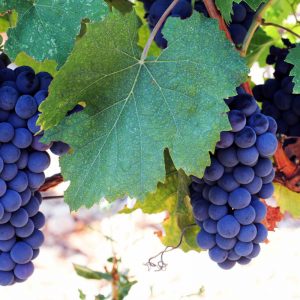 Trnjak
Trnjak
Still insufficiently researched variety, best known as Blatina pollinator, its synonyms are Trnak, Trnjak, Trnjak mali, Trnjak veliki, Trnjak uzgoriti, Kovačuša, Rudežuša, Trnak crni. It is considered an autochthonous variety in Herzegovina, although it is also widespread in neighboring Dalmatia, in Imotski, Makarska, Vrgorac and Opuzen.
Characteristics of the variety: It is a very lush cultivar, regular and of good yield, ripens in III. epoch, and is poorly susceptible to disease. The top of the green shoot is in a horizontal position and has no hairs. The scaly leaves of the bud are of a weak anthocyanin color, but it is spread all over the bud. The young leaf is green with very pronounced woolly hairs on the reverse. The adult leaf is five-part in shape with three clippings. The surface of the plate is smooth, the teeth are regular and pointed. The sinus of the petiole is open and U-shaped. The leaf is bare and hairless. It belongs to the leaves of medium size. The flower is morphologically and functionally hermaphroditic, and there are usually three flowers on the shoot. The cluster is short, of medium size, pyramidal and compact. The berry is round, medium in size, extremely dark blue in color, uncolored and firm flesh
Wine properties: This variety can accumulate 20 – 24% of sugar in the must, and in exceptional years even more. Total acids in the must range from 6 – 8 g / L. Trnjak gives the wine a very intense, characteristic, dark ruby red color. It has a very developed and varietal characteristic aroma, and a full and harmonious taste.
Žilavka
The most widespread autochthonous Herzegovinian variety of exceptional quality, which is most often accompanied by the accompanying varieties Ben and Krkošija. It is probably named after its thin veins that can be seen in the berry at maturity, although some claim that it got its name from its toughness, ie resistance or its well-developed root (syn. Vein) that goes deep into the soil looking for water. It thrives best on the Herzegovinian rocky area where the Mediterranean climate prevails with mild winters and warm and dry summers, with heavy rainfall in the colder part of the year.
Variety characteristics: It ripens in the middle of the third period, a little earlier than Blatina. Žilavka is of lush and upright growth. It is regular and of good fertility. The leaves are medium to large, usually five-parted. The face of the leaf is a smooth light green color, and the reverse of the leaf is a shade lighter and hairier.
The clusters of žilavka are medium-sized, pyramidal or cylindrical in shape. You can often find loose, but also very compact clusters of Žilavka in the vineyards. The berries are round medium to large, green-yellow to yellow-amber shades. At harvest time, the sugar content can reach 25%, and total acids range from 5 to 7 g / l.
Wine properties: Gives quality wines, which from good positions and with proper vinification often reach top quality. The wines are distinctly mineral, greenish-yellow in color, with a specific aroma that varies from herbal to floral notes. They are rich in extract, and reach from 12 to 14 vol.% Alcohol and 5 to 6 g / l of total acids, which contributes to the fullness and harmony of this wine.

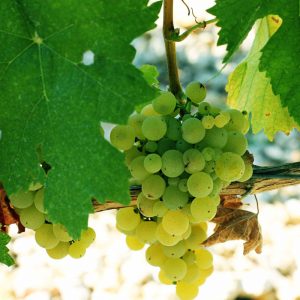 ACCOMPANYING VARIETIES OF ŽILAVKA – KRKOŠIJA
ACCOMPANYING VARIETIES OF ŽILAVKA – KRKOŠIJA
It matures in the third period like Žilavka and has irregular fertilization due to the appearance of anomalies in the permeable soils with enough moisture, such as redness in the areas of Brotnje, Dubrava and around Ljubuški. It is less structure of the flower. The weight of the bunch varies from 100 to 200 g. It is suitable for short pruning and likes tolerant of drought and infertile soils. On fertile soils it gives grapes of good quality with a good content of sugars and acids. Gives a bitter greenish-yellow wine with a good extract, but without a pronounced aroma. In pure varietal composition, it does not represent any quality, but in a blend with Žilavka and Ben, good and quality wines can be achieved.
ACCOMPANYING VARIETIES OF ŽILAVKA – BEN
Bena is a white wine grape variety. Regular fertilization is normal. It ripens in the first half of September and the average weight of the grapes is about 130 grams. This is a variety for warmer regions and is very resistant to powdery mildew and powdery mildew. With a short pruning it gives a good yield. It can thrive on weaker soils and unfavorable positions because it is very durable. Bene must contains 16-22% of sugar and 4.9 to 7.8 g / l of total acids. Pure Bene wine is of mediocre quality because it contains less alcohol than Žilavka wine. Due to the higher acid content, it is a good addition to Žilavka wine, but in a smaller percentage, approximately 5%. It can also be used as a toothpick.
Plavac Mali
The most widespread and economically most important autochthonous Croatian variety. He is a descendant of Crljenko from Kaštela (Zinfandel) and Dobričić. The first Croatian wine with a protected geographical origin.
Variety characteristics: The breeding area of Plavac mali is, due to its high requirements for sun and heat, narrowly limited. It thrives in difficult, rocky and arid areas of central and southern Dalmatia and the Dalmatian islands. It has good resistance to various fungal diseases, the reason for this is certainly the hard skin of the berries and the firm structure. There is a lot of diversity in botanical features between the types of the Plavac population. The size, shape and weight of bunches and berries vary considerably. The adult leaf is pentagonal, of medium size. The ribs on the reverse of the leaf are bare and velvety along the plait. The reverse of the leaf is arachnoid.
Wine properties: Plavac Mali gives wines of a very dark red garnet color and increased alcohol content, rich and full taste, specific aroma and pronounced bouquet.
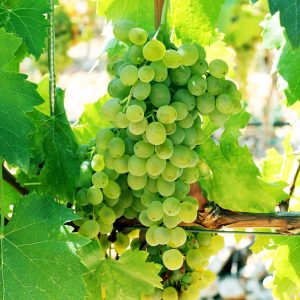 Pošip
Pošip
An autochthonous variety that produced the first Croatian white wine with a protected geographical origin, back in 1967. It originates from the island of Korčula, where it produces top quality wines at the Smokvica and Čara locations. There are two stories about how the name Pošip came about. According to one, the reason is the elongated pointed berries that resemble “šip”, the Korčula name for cramp. And according to another story, the name came about because the first lineage of Pošip was found with developed shoots next to a pomegranate.
Variety characteristics: The tips of the shoots are hooked, light green or yellowish-light green in color. The shoot is strong, round to slightly elliptical and slightly ribbed. It is light green in color, while on the sunny side there are slightly yellow shades, it is completely naked. The flower is bisexual. The face of the leaf is smooth, glabrous, light green, and the reverse pale green, with ribbed ribs and glabrous.
The mature cluster is medium to large, conical, winged, branched and scattered with two to three wings.
The berries are ovoid, pointed at the top, from green-yellow to golden-yellow to amber skin, which depends on the lushness, the position of the grapes on the vine and the time of harvest. The skin is thin, translucent, fleshy, juicy and sweet meat, specific edible varietal aromas.
Wine properties: Wines are usually strong, full, golden yellow in color. The varietal aroma is pleasant and recognizable. Harmonious alcohols and acids, and a fresh and harmonious wine is obtained.
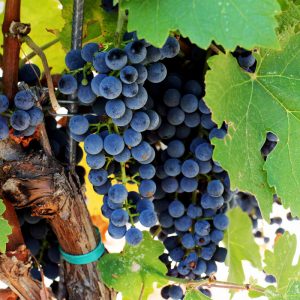 Cabernet Sauvignon
Cabernet Sauvignon
Variety originating from France in the Bordeaux area, created by crossing Sauvignon Blanca and Cabernet Franca. One of the most widespread and prized varieties in the world.
Variety characteristics: The vine is of medium lush growth, regular yield. Vegetation movement is medium or later. It is suitable for areas with temperate climates, it is suitable for dry and warm positions. In the north it requires positions of good hilly exposure, and in the lower positions clayey-gravelly permeable soils. Varieties are favored by various systems of cultivation and pruning, it is important that they correspond to the ecological conditions of cultivation. In the northern parts the pruning should be medium to moderately long, and in the southern parts medium and short. It is important to maintain a good balance between vegetation development and fertility. The tip of the shoot is spread, woolly, yellow-green with a pronounced reddish tinge, while the apical leaves are closed and woolly. The leaf is medium-sized, five-parted with closed sinuses and folded tips.
The cluster is medium or small, often with one pronounced wing, the berry is firm, medium-sized, round in shape, blue-purple in color.
Wine properties: Cabernet Sauvignon wine is an intense ruby red color with a transition to purple. Lots, extractive, with a lot of alcohol, intense characteristic varietal aromas. Aging significantly improves quality. It is a very suitable variety for blending.
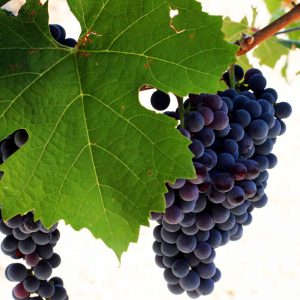 Cabernet Franc
Cabernet Franc
Traditional variety Bordeaux, very widespread, and in wines most often accompanying the variety Merlot and Cabernet Sauvignon with which it gives the best results. Along with Sauvignon Blanc, he is one of the parents of Cabernet Sauvignon.
Variety characteristics: Very adaptable variety, thrives on different soils, but it is best suited to sandy-loamy or sandy-gravelly soils. A lush variety with great yield potential, which needs to be controlled for quality. Suitable for dry climates or positions with good airflow during flowering.
The variety requires cultivation systems of greater expansion and long pruning. Green pruning should be done quickly and sharply. The tip of the shoot spread, greenish-white with a reddish-purple tinge. Leaf of medium size, five-parted, the leaf is wavy, dark green, the teeth pronounced. Cluster medium-sized, pyramidal, winged, loose, often slightly loose. The berries are medium-sized, round, and the skin is dark blue.
Wine properties: Gives wines with a delicate aroma, with a pronounced fruity character – raspberries, black currants, as well as floral notes of violets. You can also find the spicy aroma of green pepper in some years, which is a characteristic of very ripe grapes. Varietal wines are intense ruby red in color. Due to its specific tannin structure and slightly lower total acids, it matures faster than Cabernet Sauvignon.
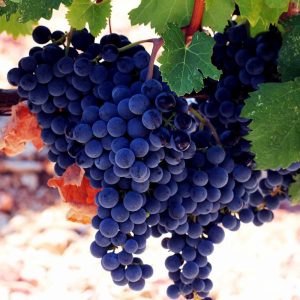 Merlot
Merlot
One of the most famous French varieties, it is grown equally well in the southern and northern hemispheres. It is most commonly found in traditional Bordeaux blends with Cabernet Sauvignon and Cabernet Franco. Although as an independent variety it dominates the area of Saint-Emilion and Pomerol, whence it originates. Synonyms are Merlau, PlantMedoc.
Variety characteristics: Medium lush, strong vegetative potential. In order to achieve satisfactory yields, it is cut on a long native tree. It is adapted to different soil types and climates, but does not tolerate very hot and dry climates unless irrigation is carried out. It is relatively moderate in yield, but there is a need to thin out the bunches if more vigorous growth occurs.
The cluster is medium-sized or small, conical or cylindrical-conical in shape, often with a single wing. The berries are small or medium-sized, round, with a medium-thick or thick skin of dark blue color.
Properties of wine: It can accumulate good amounts of sugar, from 20 to 24%, but also acids from 7 to 9 g / l. It gives a structural and full wine of rounded tannins, fruity aromas of cherry, raspberry and plum.
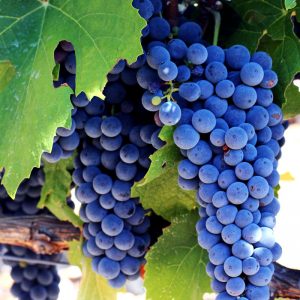 Touriga Nacional
Touriga Nacional
Indigenous and leading Portuguese black variety. Its synonyms are Turiga, Tinta de Dao, Touriga Fina, Bical Tinto, Mortagua, Touriga Antiga. The most widespread variety in the Portuguese regions of Dao and Douro. It is the most famous variety for the production of the best Portuguese dessert wine – Porto. It thrives in dry wine-growing areas, and its grapes, in addition to their ability to accumulate sugar, total acidity and tannin compounds, also contain aromatic compounds reminiscent of forest berries. It is also valued in other wine-growing areas of Portugal, but also on other continents (South Africa and Australia) where the production of port-like wines is nurtured.
Variety properties: Lush and strong growth. She is accustomed to the fierce heat on steep rocky vineyards. The most common form of cultivation is Guyot, and a sharp cut is needed to keep growth under control. In contrast to its lush growth, its fertility is quite low. The clusters are medium to small, dark blue berries.
Wine properties: Despite the lower yield, it is an excellent variety for blending, giving ruby red wines, strong tannins and complex aromas of berries, chocolate, tobacco, black tea and violet.
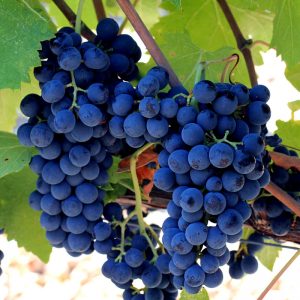 Syrah
Syrah
That is, Shiraz, as it is called in Australia, New Zealand, South Africa and Canada. The variety originates from France. For a long time this variety was neglected, and today it is one of the most cultivated in the world.
Variety characteristics: Syrah is the variety that gives the best results on warm structural soils, with good water capacity in warm climates. It is a regular fertilization and of mediocre fertility. The tips of the shoots are erect, flattened, cobwebby white with carmine reddish edges. The adult leaf is medium-sized, round, pentagonal with deep sinuses. The face is bright green, and the reverse brighter, rarely cobwebby. The mature cluster is medium-sized, cylindrical, usually elongated, compact, with a knee-shaped elongated stalk. Ripe berries are round to oval, medium to small, distinctly dark blue in color. The meat is juicy, sweet and edible.
Wine properties: Accumulates 18-25% sugar, with a total acidity of 6.0 to 8.0 g / l. Gives strong, extractive, colored wines suitable for blending. The wines are very aromatized with a pronounced fullness of taste. The aroma of Syrah can include any crimson fruit: blueberries, black currants, cherries, plums, and the color of the wine often varies, usually from extremely dark to red wine. Exotic flavors can include ginger, dark chocolate, and often floral shades.
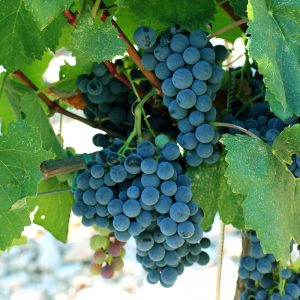 Alicate Bouscet
Alicate Bouscet
French variety created by crossing Petit Bouschet and Grenache. The most widespread dye in the world, ie a variety with colored juice that serves to improve the color of wine of other varieties.
Variety characteristics: Suitable for temperate climate. Requires medium or short pruning. It gives birth abundantly. The tip of the young shoot is fan-shaped, woolly, greenish-white. The young leaf is green with copper spots, and the shoots have red lines on the internodes. Adult leaves green strongly colored nervature, the reverse of the leaves quite hairy. The cluster is medium-sized and the berry medium-round, with a thick firm skin.
Wine properties: Alicante is a dye that is mostly used in blends because of its deep intense color. In addition, Alicante Bouschet is a very fertile variety that gives high yields, and therefore its wine is of lower quality, which lacks character and complexity.


